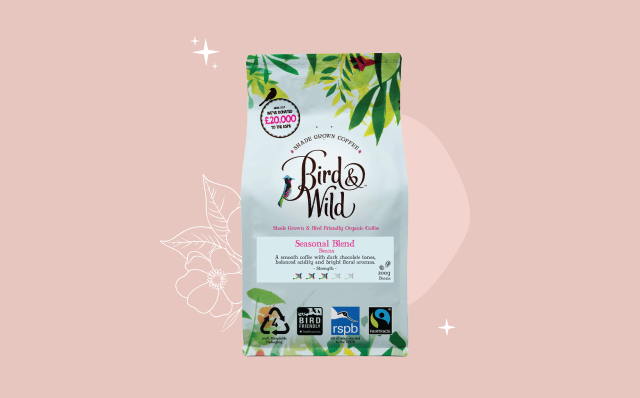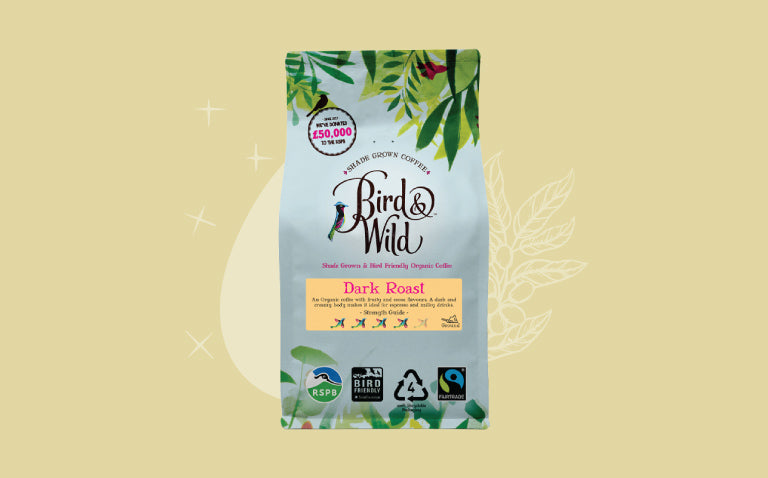Latest Research suggests that Bird Friendly Coffee tastes better
An article published last month in the Journal of Agriculture and Food Research suggests that diverse agroforestry systems – like those certified under the Bird Friendly standard – produce coffee with improved sensory qualities.
The study, which took place in Peru, evaluated how sensory characteristics of coffee can change depending upon tree diversity and crop segmentation in agroforestry systems.
Researchers looked at sensory qualities such as fragrance, flavour, body, balance, cupping score and more and found that the highest average scores came from agroforestry systems with diverse trees.
Many thanks to the latest research published in the Journal of Agriculture and Food Research in December 2024 entitled:
"Sensory quality of coffee (Coffea arabica L.): Influence of tree diversity and harvest segmentation in agroforestry systems"
Shade-Grown Coffee and Its Impact on Quality
Shade-grown coffee is cultivated under the canopy of diverse tree species, such as Erythrina edulis and Inga edulis, which provide a regulated microclimate. This system reduces heat stress, improves soil quality, and conserves biodiversity. Research suggests that Arabica coffee beans grown under medium to dense shade tend to be heavier and exhibit improved physical and organoleptic qualities, such as size, weight, body, and acidity.
A study conducted in the Rodriguez de Mendoza province of Peru analyzed the influence of different tree species on coffee quality. The results indicated that shade-grown coffee, particularly in mixed agroforestry systems, consistently outperformed coffee grown in full sun. The research showed that tree diversity enhances the uniformity of coffee ripening, which directly impacts the sensory attributes of the final product. Specialty coffee, classified by the Specialty Coffee Association (SCA) as scoring over 80 points in sensory evaluations, was consistently produced under shade.
Sensory Characteristics and Harvest Segmentation
The research also investigated the impact of harvest segmentation—picking coffee cherries separately from the lower, middle, and upper parts of the coffee tree—on coffee quality. The study found that while different harvest levels showed similar sensory scores, the bottom-third cherries exhibited slightly superior results. These findings suggest that both tree diversity and harvest segmentation contribute to enhancing the sensory profile of coffee, making it a preferred choice for specialty coffee markets.
Using Principal Component Analysis (PCA), the study identified fragrance/aroma as the most influential variable in determining coffee’s sensory quality. Shade-grown coffee demonstrated superior fragrance, balance, and body when compared to unshaded systems. Interestingly, while previous studies suggested that shade could negatively affect attributes such as aroma, this research found that a mixed agroforestry system significantly enhanced these qualities.
Environmental and Economic Benefits of Shade-Grown Coffee
Beyond quality improvements, shade-grown coffee offers multiple ecological benefits. The trees within agroforestry systems provide habitat for wildlife, support pollinators, and contribute to carbon sequestration. Additionally, shaded conditions slow the ripening process, allowing for a more complex flavor profile while mitigating the adverse effects of climate change.
Economically, shade-grown coffee can command premium prices due to its higher quality and appeal to environmentally conscious consumers. Farmers adopting agroforestry methods benefit from diversified income sources, as shade trees can also provide timber, fruit, or nitrogen-fixing properties that enrich the soil. These sustainable practices make shade-grown coffee an excellent choice for producers aiming to balance profitability with environmental responsibility.
The findings from this research reaffirm the advantages of shade-grown coffee, demonstrating its positive impact on sensory quality and sustainability. Agroforestry systems, particularly mixed-species plantations, contribute to improved cup quality while supporting biodiversity and soil health. Given the increasing consumer preference for ethically sourced and high-quality coffee, shade-grown coffee represents a viable solution for farmers seeking to enhance both their product and environmental footprint.
As climate change continues to pose challenges for coffee production, shade-grown coffee offers a resilient and sustainable approach to cultivation. By integrating diverse tree species and adopting selective harvesting methods, farmers can ensure a high-quality product that meets the demands of specialty coffee markets while fostering long-term ecological balance.




Leave a comment
This site is protected by hCaptcha and the hCaptcha Privacy Policy and Terms of Service apply.